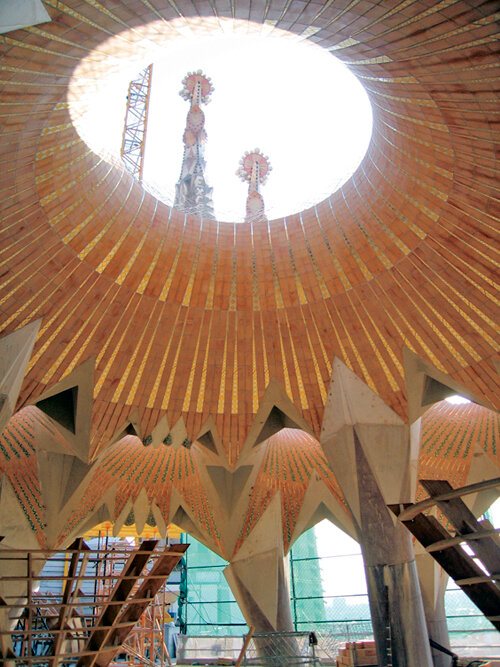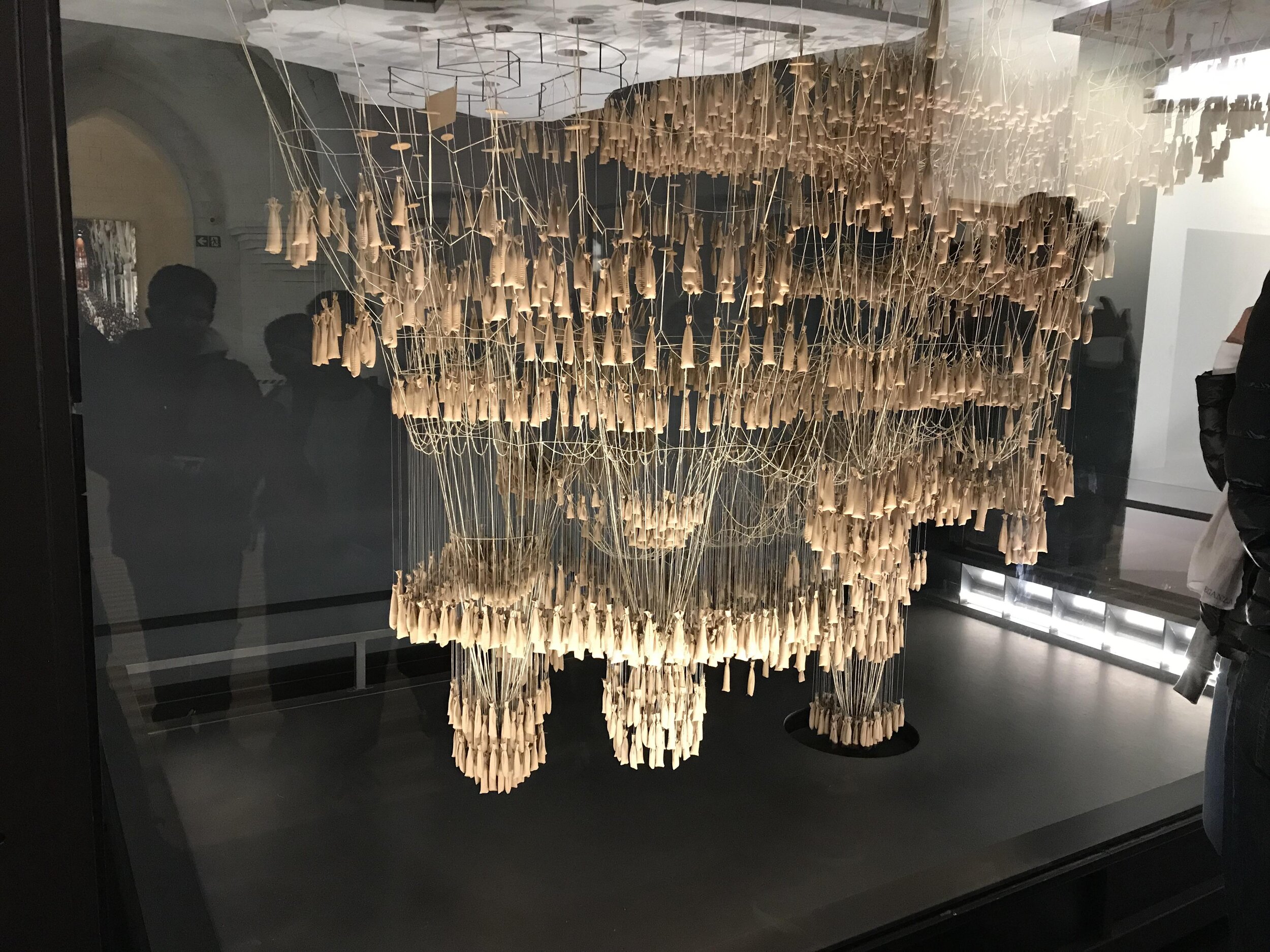hyperbolic PERCEPTION
Penn Design | Summer 2013
Andrew A. Mellon Humanities Fellowship | Kelson Family College Alumni Society Award
A form-finding study of the acoustical and structural benefits of hyperbolic geometries in design inspired by the works of Antoni Gaudi and Iannis Xenakis
Gaudi - hyperbolic form and light
The following view of the vaulted ceiling of the sanctuary and numerous hyperbolic light-wells portrays the reflective capability of the great hall
Completed in 2011, the strikingly tall sanctuary interior to Barcelona's Sagrada Familia reflects Antoni Gaudi's obsession with non-Euclidean forms for both their structural potential and reflective capabilities
Gaudi’s experimentation with tensile catenary geometry through the creation of a model using equally weighted sand bags and string in early formal designs for the Sagrada Familia
Iannis Xenakis - hyperbolic form and Sound
The following early sketches of his famed 'Polytope', a tent-like structure comprised solely of hyperbolic paraboloids, exemplifies Xenakis' use of the reflective potential of the paraboloid to house a fully immersive concert experience of synchronized surround sound and laser lights
Architect/composer Iannis Xenakis would define his late career around uses of non-Euclidean geometry, specifically the hyperboloid and hyperbolic paraboloid, in search of new forms of sonic and visual stimulation in relation to structure
Alternate Polytope iteration consisting of lines of flashing lights arranged to form a hyperbolic enclosure
Tensile geometry study models
Formation of parabolic surfaces through method adapted from early tensile models of Gaudi and Xenakis, using lycra fabric, precisely weighted water balloons, and epoxy resin
Resulting tensile geometries
In the following parabolic resin studies, a ghost light is applied beneath the resulting surface geometry in order to visualize the behavior of sound along a given parabolic surface of varying complexity. Areas of greatest intensity of light correspond to regions of direct sound reflections, while regions cast in shadow represent regions of aural inactivity
















